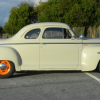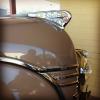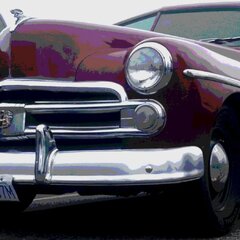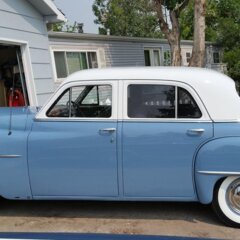-
Posts
1,758 -
Joined
-
Last visited
-
Days Won
5
martybose last won the day on January 26 2015
martybose had the most liked content!
Reputation
183 ExcellentAbout martybose
- Birthday 08/14/1946
Profile Information
-
Gender
Male
-
Location
Galt,CA
-
My Project Cars
my 47 Business Coupe, now sold
Converted
-
Location
Across the bay from San Francisco
-
Interests
my old car, and SCCA race cars
Contact Methods
-
Occupation
Retired!
Recent Profile Visitors
3,313 profile views
-
I'm a little late to the party, but I will say that back a couple of decades ago when my car was still 6V i bought a pair of motorcycle 6V LED headlights, and they were awesome! Marty
-
You will always need to use the clutch when shifting the three speed. If it is set up properly you never need to use the clutch to go into or out of overdrive. Marty
-
Business Coupes had a much larger trunk because the forward bulkhead was moved farther forward by eliminating the rear seat altogether. Marty
-
I had a switch on the shifter lever that controlled power to the relay. Marty PS It is not a good idea to pull out the actuating cable while the car is moving, it can damage to OD unit. You should only pull it out when the vehicle is stopped.
-
The only thing the factory kickdown switch does is briefly interrupt the ignition when you stomp on the gas pedal to briefly unload the OD gears so that it can easily disengage the gear and shift back to direct. I never had the kickdown switch on my car, when I wanted to get out of OD I would turn the OD switch off, then briefly lift my foot off of the throttle, and it would downshift into direct. It isn't that big a deal. Marty
-
It sounds like the flasher is using the parking lights for a ground path. Check to make sure all of the turn signal sokets have good grounds. Marty
-

LED running lights and halogen headlights for my '47 Super De Luxe
martybose replied to 46Chris's topic in P15-D24 Forum
I would caution you to keep an eye on things like your dimmer switch. When I first installed 6V halogens a few decades ago I found the the oem bulbs were 30W, and the halogens were 60W, and both the headlight switch and the dimmer switch both started getting hot when the headlights were on. I eventually installed a 6V headlight relay to carry the load so that the headlight switch and the dimmer switch were only controlliing the headlight relay instead of carrying the total load. Marty -
While your description is good, in the case of an R10 OD it is wrong. The R10 moves the speedometer pickup to the tailshaft of the OD unit, so it is reading the propshaft speed, which stays the same regardless of the engagement of the OD function. That said, it i probably easier to get an inline speedometer gearbox to correct any error that exists with the final drive ratio/tire size issue. Most speedometer shops can supply them with any gear ratio that you need, just tell them how the speedometer reading and a GPS speed compare. Marty
-
Adam H P15 D30 started following martybose
-
Mine certainly was fixed. It was working perfectly when I sold the car, it was still working perfectly when the car was resold to another buyer. I have lost track of the car now, wish I knew how it is doing. Marty
-
My 230 motor, with 9 to 1 compression, forged pistons, Edmunds head and intake, cast iron headers, etc. was very finicky even on 91 octane gas. It was difficult to get an advance curve that would work at all RPM's. I think I went a little too far with it.
-
The valve clearance issue is especially important with aftermarket heads. With mine the valve would close the sparkplug gap on long reach plugs, had to use washers on the plugs to make them work.
-
Over two decades ago I worked with Rhode Island on a new harness setup on my car. The were willing to make any modifications, so I did things like upping the gauge of all the headlight wires for modern halogens, deleting the voltage regulator wiring due to the single wire alternator, adding turn signal wiring and stop light wiring to the back lights., and much more. There has never been any repairs needed, and it was still 100% when I sold it.
-

Flathead 6 - Head Torque both Initial and Maintenance
martybose replied to Semmerling's topic in P15-D24 Forum
When the head gasket blew out in my original motor I found that almost a quarter of the bolts could be removed without a tool; I've no idea how the gasket lasted as long as it did. Since then I would always torque them initially, then every week or so I would see what happened when I retorqued them. It actually took three retorqings before it reached the point where none of the bolts moved. Then I stopped worrying about it. -
I guess no one caught the fact that the illustrated procedure shows one of the valves (#2 intake to be exact) being adjusted in both positions? That won't work well!
- 42 replies
-
- adjusting valves
- valves
-
(and 1 more)
Tagged with:
-
Like most simplified adjustment procedures, this one has errors. If you go through the steps listed, you will adjust the intake valves on #2 and #5 twice, and one of them will be wrong.
- 42 replies
-
- adjusting valves
- valves
-
(and 1 more)
Tagged with:







